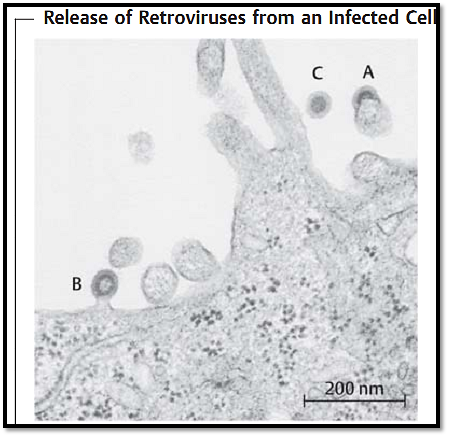

النبات

مواضيع عامة في علم النبات

الجذور - السيقان - الأوراق

النباتات الوعائية واللاوعائية

البذور (مغطاة البذور - عاريات البذور)

الطحالب

النباتات الطبية


الحيوان

مواضيع عامة في علم الحيوان

علم التشريح

التنوع الإحيائي

البايلوجيا الخلوية


الأحياء المجهرية

البكتيريا

الفطريات

الطفيليات

الفايروسات


علم الأمراض

الاورام

الامراض الوراثية

الامراض المناعية

الامراض المدارية

اضطرابات الدورة الدموية

مواضيع عامة في علم الامراض

الحشرات


التقانة الإحيائية

مواضيع عامة في التقانة الإحيائية


التقنية الحيوية المكروبية

التقنية الحيوية والميكروبات

الفعاليات الحيوية

وراثة الاحياء المجهرية

تصنيف الاحياء المجهرية

الاحياء المجهرية في الطبيعة

أيض الاجهاد

التقنية الحيوية والبيئة

التقنية الحيوية والطب

التقنية الحيوية والزراعة

التقنية الحيوية والصناعة

التقنية الحيوية والطاقة

البحار والطحالب الصغيرة

عزل البروتين

هندسة الجينات


التقنية الحياتية النانوية

مفاهيم التقنية الحيوية النانوية

التراكيب النانوية والمجاهر المستخدمة في رؤيتها

تصنيع وتخليق المواد النانوية

تطبيقات التقنية النانوية والحيوية النانوية

الرقائق والمتحسسات الحيوية

المصفوفات المجهرية وحاسوب الدنا

اللقاحات

البيئة والتلوث


علم الأجنة

اعضاء التكاثر وتشكل الاعراس

الاخصاب

التشطر

العصيبة وتشكل الجسيدات

تشكل اللواحق الجنينية

تكون المعيدة وظهور الطبقات الجنينية

مقدمة لعلم الاجنة


الأحياء الجزيئي

مواضيع عامة في الاحياء الجزيئي


علم وظائف الأعضاء


الغدد

مواضيع عامة في الغدد

الغدد الصم و هرموناتها

الجسم تحت السريري

الغدة النخامية

الغدة الكظرية

الغدة التناسلية

الغدة الدرقية والجار الدرقية

الغدة البنكرياسية

الغدة الصنوبرية

مواضيع عامة في علم وظائف الاعضاء

الخلية الحيوانية

الجهاز العصبي

أعضاء الحس

الجهاز العضلي

السوائل الجسمية

الجهاز الدوري والليمف

الجهاز التنفسي

الجهاز الهضمي

الجهاز البولي


المضادات الميكروبية

مواضيع عامة في المضادات الميكروبية

مضادات البكتيريا

مضادات الفطريات

مضادات الطفيليات

مضادات الفايروسات

علم الخلية

الوراثة

الأحياء العامة

المناعة

التحليلات المرضية

الكيمياء الحيوية

مواضيع متنوعة أخرى

الانزيمات
Viral Protein Synthesis
المؤلف:
Kayser, F. H
المصدر:
Medical Microbiology
الجزء والصفحة:
18-11-2015
2096
Viral Protein Synthesis
Production of viral mRNA. In a DNA virus infection, cellular polymerases transcribe mRNA in the nucleus of the host cell from one or both DNA strands, whereby the RNA is processed (splicing, polyadenylation, etc.) as with cellular mRNA. An exception to this procedure is the poxviruses, which use their own enzymes to replicate in the cytoplasm.
In viruses with antisense-strand ssRNA and dsRNA the transcription of the genomic RNA into mRNA is carried out by the viral polymerases, usually without further processing of the transcript.
In sense-strand ssRNA viruses, the genome can function directly as mRNA.
Certain viruses (arenaviruses) are classified as “ambisense viruses." Part of their genome codes in antisense (-), another part in sense (+) polarity. Proteins are translated separately from subgenomic RNA and the antisense-coded proteins are not translated until the antisense strand has been translated into a sense strand.
Viral mRNA is produced for the translation process, based on both the genome of the invading virus and the nucleic acid already replicated.
The actual protein synthesis procedure is implemented, coded by the viral mRNA, with the help of cellular components such as tRNA, ribosomes, initiation factors, etc. Two functionally different protein types occur in viruses:
-The “noncapsid viral proteins” (NCVP) that do not contribute to capsid assembly. These proteins frequently possess enzymatic properties (polymerases, proteases) and must therefore be produced early on in the replication cycle.
-The capsid proteins, also known as viral proteins (VP) or structural proteins, appear later in the replication process.
Protein Synthesis Control
Segmented genomes. A separate nucleic acid segment is present for each protein (example: reoviruses).
mRNA splicing. The correct mRNA is cut out of the primary transcript (as in the cell the exon is cut out of the hnRNA) (examples: adenoviruses, retroviruses, etc.).
“Early” and “late” translation. The different mRNA molecules required for assembly of so-called early and late proteins are produced at different times in the infection cycle, possibly from different strands of viral DNA (examples, papovaviruses, herpesviruses).
Posttranslational control. This process involves proteolytic cutting of the primary translation product into functional subunits. Viral proteases that recognize specific amino acid sequences are responsible for this, e.g., the two poliovirus proteases cut between glutamine and glycine or tyrosine and glycine. Such proteases, some of which have been documented in radiocrystallographic images, are potential targets for antiviral chemotherapeutics (example: HIV).
Viral maturation (morphogenesis). In this step, the viral capsid proteins and genomes (present in multiple copies after the replication process) are assembled into new, infectious virus particles. In some viral species these particles are also covered by an envelope .
Release. The release of viral progeny in some cases correlates closely with viral maturation, whereby envelopes or components of them are acquired when the particles “bud off” of the cytoplasmic membrane and are expelled from the cell (Fig. 1). In nonenveloped viruses, release of viral progeny is realized either by means of lysis of the infected cell or more or less continuous exocytosis of the viral particles.

Fig. 1 Electron microscope image of release of viral progeny. The process takes place in the order, A, B, C.
References
Fritz H. Kayser, M.D. Emeritus Professor of Medical Microbiology Institute of Medical Microbiology, University of Zurich, Zurich, SwitzerlandThieme 2005, Stuttgart ! New York.
 الاكثر قراءة في الفايروسات
الاكثر قراءة في الفايروسات
 اخر الاخبار
اخر الاخبار
اخبار العتبة العباسية المقدسة

الآخبار الصحية















 قسم الشؤون الفكرية يصدر كتاباً يوثق تاريخ السدانة في العتبة العباسية المقدسة
قسم الشؤون الفكرية يصدر كتاباً يوثق تاريخ السدانة في العتبة العباسية المقدسة "المهمة".. إصدار قصصي يوثّق القصص الفائزة في مسابقة فتوى الدفاع المقدسة للقصة القصيرة
"المهمة".. إصدار قصصي يوثّق القصص الفائزة في مسابقة فتوى الدفاع المقدسة للقصة القصيرة (نوافذ).. إصدار أدبي يوثق القصص الفائزة في مسابقة الإمام العسكري (عليه السلام)
(نوافذ).. إصدار أدبي يوثق القصص الفائزة في مسابقة الإمام العسكري (عليه السلام)


















